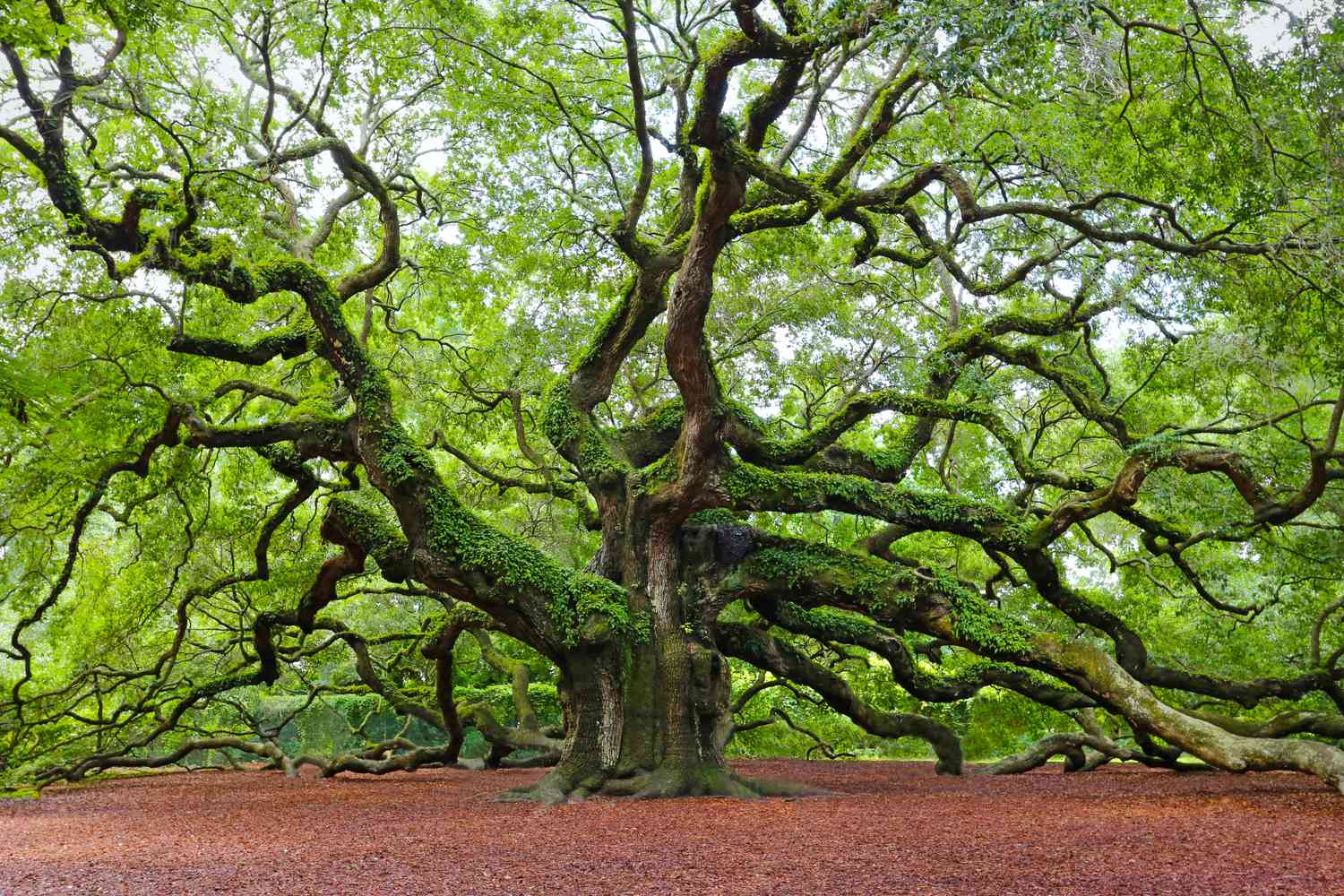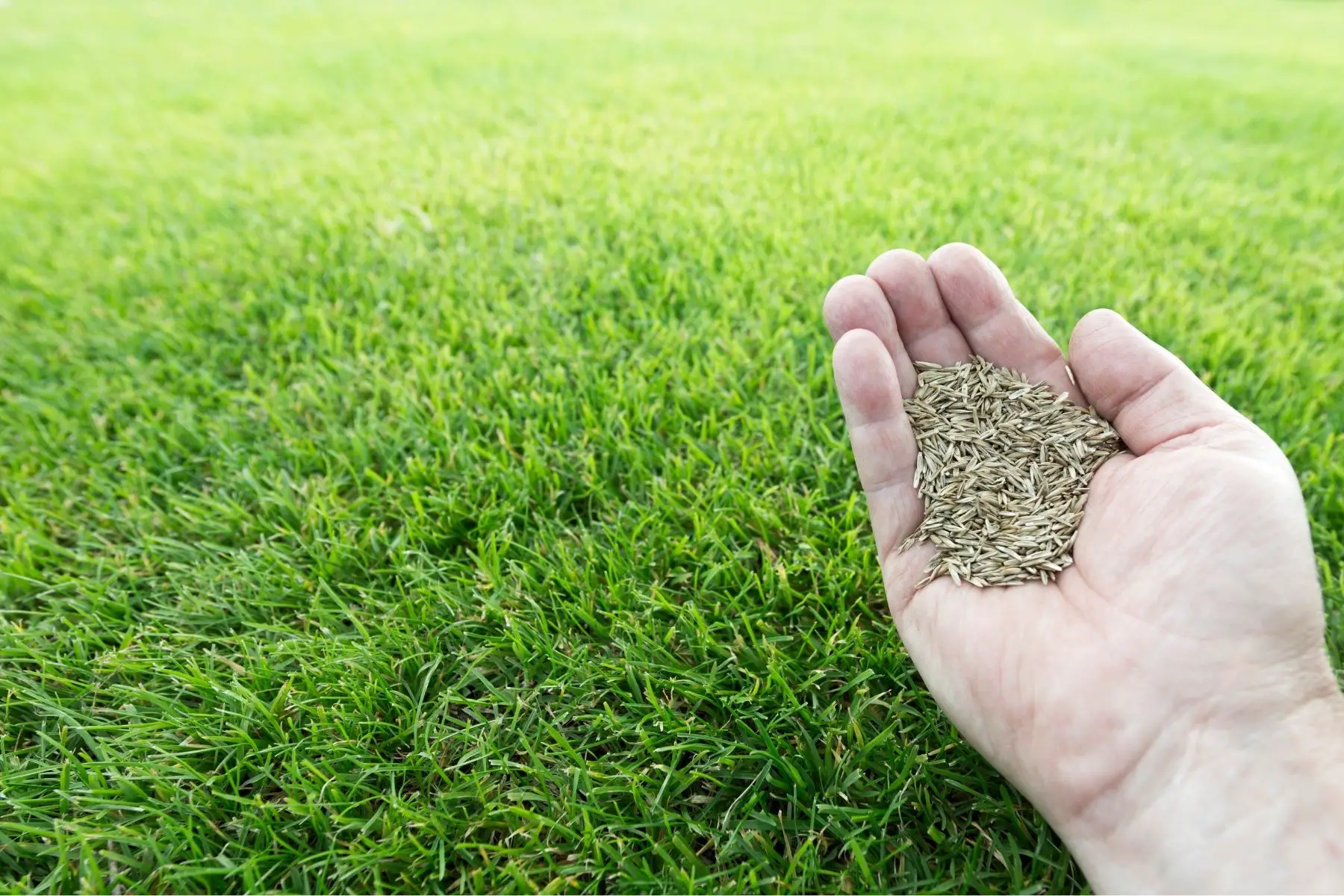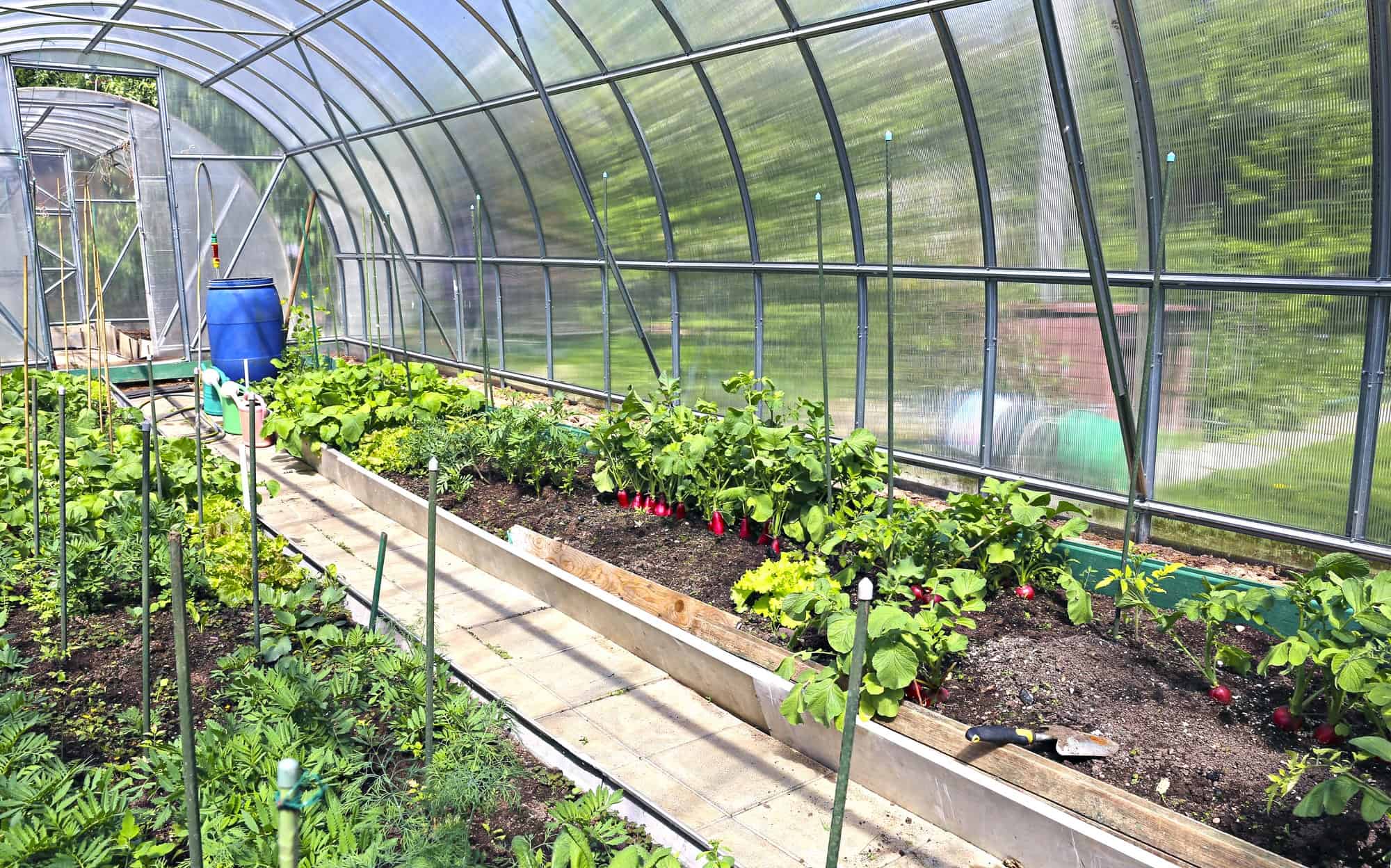Home>Gardening Techniques>Plant Care>How Long Do Trees Take To Grow


Plant Care
How Long Do Trees Take To Grow
Modified: January 22, 2024
Discover the timeline of tree growth and learn essential plant care tips to ensure healthy and thriving trees.
(Many of the links in this article redirect to a specific reviewed product. Your purchase of these products through affiliate links helps to generate commission for Chicagolandgardening.com, at no extra cost. Learn more)
Table of Contents
Introduction
Welcome to the wonderful world of trees and plant care! Trees are essential for our environment, providing us with oxygen, shade, and beauty. Whether you’re a homeowner with a backyard full of trees or a professional in the field of forestry, understanding the growth of trees is crucial for their care and management. Have you ever wondered how long it takes for a tree to reach its full size? Or what factors contribute to the growth rate of different tree species? In this article, we will explore the fascinating process of tree growth and the various factors that influence it.
Trees are incredible organisms that have the ability to grow and develop over time. They start their journey as small saplings and, with the right conditions and care, can reach towering heights. The growth of a tree is a complex process that is influenced by numerous factors, including genetics, environmental conditions, and human interventions. By understanding these factors, we can cultivate healthy and thriving trees while also contributing to the overall health of our ecosystem.
Factors Affecting Tree Growth
Several key factors play a significant role in influencing the growth of trees. Understanding these factors is essential for providing optimal care and ensuring the healthy development of trees. Let’s delve into the main factors affecting tree growth:
- Species: Different tree species have varying growth rates. Some trees, such as bamboo, can grow several feet in a single year, while others, like oak trees, have a slower growth rate that spans several decades. The genetic characteristics of each species determine their growth potential.
- Age: The age of a tree directly affects its growth rate. Younger trees tend to grow at a faster pace as they establish their roots and develop their structure. As trees age, their growth rate gradually slows down.
- Soil Quality: The quality and composition of the soil have a significant impact on tree growth. Trees require nutrients from the soil for their development. Nutrient-rich soils with proper drainage promote healthy root systems and aid in the absorption of water and essential minerals.
- Water Availability: Adequate water supply is crucial for tree growth. Insufficient water can lead to stunted growth or even cause the tree to wither and die. Conversely, excessive water can lead to root rot and other problems. Finding the right balance and providing sufficient water during dry periods is essential.
- Sunlight: Trees rely on sunlight for photosynthesis, a process that converts light energy into food. Lack of sunlight can hinder the growth and development of trees. Ensuring that trees receive sufficient sunlight is vital for their overall health and growth.
- Climate: Different tree species have different climate preferences. Some trees thrive in tropical climates with high humidity, while others prefer cooler temperatures. Matching the tree species with the appropriate climate conditions ensures optimal growth and prevents stress on the tree.
- Competition: Trees in densely populated areas may face competition for resources such as light, water, and nutrients. This competition can limit their growth potential. Adequate spacing and providing proper care can help minimize competition and promote healthy growth.
Considering these factors and providing the necessary care can significantly impact the growth and overall health of trees. By understanding the unique needs of different tree species and optimizing the environmental conditions, we can create a thriving ecosystem that benefits both the trees and the surrounding environment.
Tree Growth Rates in Different Species
Tree growth rates vary significantly among different species. Some trees exhibit rapid growth, while others grow at a slower pace. Understanding the growth rates of different tree species is essential for planning and managing landscapes, forests, and gardens. Let’s explore some tree species and their respective growth rates:
- Bamboo: Bamboo is known for its incredibly fast growth rate. Certain bamboo species can grow several feet in a single year, making them an excellent choice for creating privacy screens or adding a touch of greenery to a garden in a short amount of time.
- Willow: Willows are fast-growing trees, often known for their elegant, drooping branches. They can grow up to 10 feet in a single year, making them a popular choice for quick shade or erosion control in wetland environments.
- Poplar: Poplar trees are known for their rapid growth and can reach impressive heights in a relatively short period. They are often used in commercial tree plantations for timber production due to their quick growth rate.
- Pine: Pine trees have moderate growth rates and can vary depending on the specific species. Some pine trees, such as the Eastern White Pine, can grow one to two feet per year, while others, like the Bristlecone Pine, have a slower growth rate and can take several decades to reach maturity.
- Oak: Oak trees are known for their longevity but have a slower growth rate compared to some other tree species. It can take several decades for an oak tree to reach its full size, but their sturdy structure and long lifespan make them a valuable addition to any landscape.
- Maple: Maple trees have a moderate growth rate and can add vibrant colors to landscapes during the fall season. Depending on the species, maples generally grow at a steady pace, adding a few feet in height each year.
It’s important to note that these growth rates are general guidelines and can vary based on factors such as environmental conditions, soil quality, and the overall health of the tree. Different varieties within each species can also have slightly different growth rates. Consulting with a knowledgeable arborist or nursery professional can provide more specific information on the growth rates of different tree species in your specific area.
Understanding the growth rates of different tree species allows us to make informed decisions when selecting trees for specific purposes, such as quick shade or long-term landscape planning. It also helps in managing forests and ensuring sustainable growth for future generations.
Environmental Conditions and Tree Growth
Environmental conditions play a vital role in the growth and development of trees. Trees have specific requirements for factors such as sunlight, temperature, rainfall, and soil composition. Understanding how these environmental conditions impact tree growth can help us create optimal conditions for healthy and thriving trees. Let’s explore the relationship between environmental conditions and tree growth:
- Sunlight: Sunlight is a crucial factor for photosynthesis, the process through which trees convert sunlight into energy. Trees that receive insufficient sunlight may experience stunted growth or have sparse foliage. Adequate exposure to sunlight throughout the day is essential for optimal tree growth.
- Temperature: Different tree species have different temperature preferences. Extreme temperatures, whether too hot or too cold, can stress trees and impede their growth. Understanding the hardiness zones for specific tree species helps us select trees that can thrive in appropriate temperature ranges.
- Rainfall: Adequate water supply is vital for tree growth. Insufficient rainfall can result in drought stress and limited growth. Conversely, excessive rainfall can lead to waterlogged soil, root rot, and other issues. Matching tree species to appropriate rainfall levels ensures optimal growth and reduces the risk of water-related problems.
- Soil Composition: The composition and fertility of the soil greatly affect tree growth. Different tree species have specific soil requirements, including pH levels and nutrient availability. Soil with good drainage and a balanced nutrient profile provides an ideal environment for root development and nutrient absorption.
- Air Quality: Air pollution can negatively impact tree growth. High levels of pollutants such as ozone, sulfur dioxide, and nitrogen dioxide can damage tree foliage, inhibit photosynthesis, and weaken overall tree health. Planting trees in areas with good air quality improves their growth potential and contributes to overall environmental well-being.
- Wind Exposure: Wind can influence tree growth by affecting transpiration rates and causing mechanical stress on branches and trunks. Windward and leeward sides of trees can experience different growth patterns, with windward sides often growing thicker and stronger to withstand the prevailing winds.
- Altitude: Altitude also influences tree growth, with different tree species adapted to specific elevations. As altitude increases, temperature and oxygen levels decrease, which affects tree physiology and growth patterns. Choosing tree species suitable for a particular altitude ensures their ability to thrive in that environment.
Understanding the environmental conditions necessary for optimal tree growth allows us to make informed choices in tree selection, site preparation, and care. By providing the right conditions, we can create a nurturing environment for trees, supporting their growth and ensuring their long-term health and vitality.
Human Interventions and Tree Growth
Human interventions can significantly impact the growth and development of trees. From planting and pruning to fertilization and pest control, our actions can either promote or hinder the growth of trees. Understanding the effects of these interventions is essential for responsible tree care. Let’s explore some common human interventions and their impact on tree growth:
- Planting: Proper tree planting techniques are crucial for establishing healthy trees. Factors such as the depth and width of the planting hole, proper root placement, and appropriate soil amendments can significantly impact tree growth. Careful consideration during the planting process sets the foundation for successful growth and development.
- Pruning: Pruning is an important practice that helps maintain the form and health of trees. Removing dead or diseased branches, thinning out dense foliage, and shaping the tree canopy can promote optimal growth. Pruning also improves air circulation and sunlight penetration, which are crucial for tree health.
- Fertilization: Providing appropriate nutrients through fertilization can enhance tree growth. Soil tests can help determine if specific nutrients are lacking and guide the application of fertilizers. Proper timing and application rates are critical to avoid overfertilization, which can damage tree roots and hinder growth.
- Watering: In periods of insufficient rainfall, supplemental watering is necessary to support tree growth. Deep watering helps establish a robust root system and promote healthy growth. However, overwatering can lead to root rot and other issues, so finding the right balance is essential.
- Protection from Pest and Diseases: Implementing measures to protect trees from pests and diseases is crucial for maintaining their growth. Regular inspections, appropriate pest control methods, and prompt treatment of diseases help prevent damage and promote healthy growth.
- Support Structures: Installing support structures such as stakes or tree straps can help young or weak trees grow upright, preventing damage from strong winds or storms. However, it’s essential to monitor the growth and adjust or remove the support structures once the tree can stand on its own.
- Selective Breeding: Human interventions in tree growth also include selective breeding to enhance desirable traits. Through careful selection and controlled pollination, tree breeders aim to create new varieties with improved growth characteristics, disease resistance, or aesthetic qualities.
When implementing human interventions, it’s essential to consider the specific needs and characteristics of each tree species. Consulting with certified arborists or tree care professionals can provide valuable guidance on the most appropriate interventions for specific tree species and situations.
By responsibly and strategically implementing human interventions, we can support healthy tree growth, minimize potential risks, and create sustainable and thriving tree populations in our landscapes and ecosystems.
The Role of Genetics in Tree Growth
Genetics plays a significant role in determining the growth characteristics of trees. Just like humans inherit certain traits from their parents, trees also inherit genetic information that influences their growth patterns, form, and overall development. Understanding the role of genetics in tree growth can provide insights into the variability observed among tree populations. Let’s explore the influence of genetics on tree growth:
Each tree inherits genetic information from its parent trees, which determines its growth potential and characteristics. Genetic factors contribute to various aspects of tree growth, including:
- Growth Rate: Genetic factors influence the speed at which a tree grows. Some tree species naturally have a rapid growth rate, while others grow more slowly. Genetic differences contribute to these variations in growth rates.
- Form and Structure: The genetic makeup of a tree plays a role in determining its overall form and structure. Some trees naturally have a tall and slender growth habit, while others may have a more compact or spreading form. Genetic traits also influence branching patterns and the shape and size of leaves.
- Disease Resistance: Genetic variation among tree populations can influence their susceptibility or resistance to diseases and pests. Trees with inherent genetic resistance to specific pathogens or pests are more likely to withstand infestations and diseases, promoting their long-term growth and survival.
- Adaptability: Genetic variation allows tree populations to adapt and thrive in different environmental conditions. Some trees may have genetic traits that enable them to withstand extreme temperatures, drought, or other challenging environmental factors, enhancing their ability to grow and survive in specific regions.
- Foliage and Flowering: Genetic factors also determine the characteristics of a tree’s foliage and flowers. Leaf shape, color, texture, and flower size and color are all influenced by the genetic makeup of the tree. These traits contribute to the overall beauty and aesthetic appeal of the tree.
It is important to note that while genetics play a significant role in tree growth, environmental conditions can also interact with genetic factors to influence a tree’s development. Trees with favorable genetic traits may exhibit reduced growth or even decline if they are subjected to unfavorable environmental conditions, such as nutrient deficiency or water stress.
Studying the genetics of trees can provide valuable insights for tree breeders, foresters, and conservationists. By understanding the genetic diversity within tree populations, we can develop strategies for breeding trees with desirable traits, promoting genetic conservation, and ensuring the long-term health and survival of trees in our ecosystems.
Implications for Forestry and Reforestation
The knowledge about tree growth factors, species-specific growth rates, environmental conditions, human interventions, and genetics has significant implications for forestry and reforestation efforts. Understanding these concepts allows us to make informed decisions and implement effective strategies to promote healthy forest ecosystems. Let’s explore the implications for forestry and reforestation:
Forest Management: The understanding of tree growth factors enables foresters to develop comprehensive management plans for their forested areas. By considering the growth rates, environmental conditions, and genetic diversity of tree species, foresters can implement appropriate strategies such as selective harvesting, reseeding, and silvicultural practices to maintain healthy forests and ensure sustainable timber production.
Sustainable Reforestation: When planning reforestation projects, it is crucial to consider the specific needs and characteristics of the tree species being planted. By selecting tree species with compatible growth rates and environmental preferences, we can improve the success rate of reforestation efforts. Additionally, choosing genetically diverse seed sources reduces the risk of disease and enhances the overall resilience of reforested areas.
Ecosystem Restoration: Understanding the growth factors and genetic diversity of trees plays a vital role in ecosystem restoration. By selecting tree species that are native to the area and have the potential to thrive in specific environmental conditions, we can create biodiverse habitats, restore ecological balance, mitigate climate change, and provide valuable benefits such as water regulation, habitat for wildlife, and carbon sequestration.
Climate Change Adaptation: The knowledge of tree growth, genetics, and environmental conditions assists in developing strategies for climate change adaptation. By identifying tree species and genetic traits that can withstand changing climatic conditions, foresters can plan for the future and select tree species that are resilient to temperature changes, drought, pests, or other environmental stressors.
Biodiversity Conservation: Understanding tree growth and genetics aids in the conservation of biodiversity. By preserving the genetic diversity of tree populations, we can safeguard rare or unique genetic traits and maintain healthy and resilient ecosystems. This includes protecting old-growth forests and creating connectivity between forest fragments to facilitate gene flow and genetic diversity.
Education and Research: The knowledge of tree growth factors and genetics is essential for educational and research purposes. Researchers can further explore the relationships between genetics, growth rates, and environmental conditions to enhance our understanding of tree biology, develop improved cultivation techniques, and contribute to innovative solutions for forest management and reforestation.
By incorporating these implications into forestry and reforestation practices, we can foster sustainable and resilient forest ecosystems that provide a multitude of ecological, economic, and societal benefits for present and future generations.
Conclusion
Understanding the growth of trees is crucial for effective plant care, forestry, and reforestation efforts. By considering the various factors that influence tree growth, we can create optimal conditions and provide appropriate care to promote healthy and thriving trees. Factors such as species-specific growth rates, environmental conditions, human interventions, and genetics all play significant roles in determining how trees develop and flourish.
Environmental conditions, including sunlight, temperature, rainfall, soil quality, and air quality, directly impact tree growth. Providing the right balance of these environmental factors enables trees to thrive and reach their full potential. Human interventions, such as proper planting techniques, pruning, fertilization, watering, pest control, and selective breeding, can also positively influence tree growth.
Furthermore, genetics plays a fundamental role in tree growth. The genetic makeup of a tree influences its growth rate, form and structure, disease resistance, adaptability, and foliage and flowering characteristics. Understanding the role of genetics allows us to select tree species and individuals with desirable traits, improving the success of reforestation efforts and supporting biodiversity conservation.
The knowledge of tree growth factors and their implications has significant implications for various fields. In forestry, understanding tree growth allows for effective forest management practices, sustainable reforestation, ecosystem restoration, climate change adaptation, and biodiversity conservation. Furthermore, education and research in tree growth contribute to advancements in cultivation techniques and innovative solutions for tree care and management.
In conclusion, by embracing the multifaceted aspects of tree growth and adapting our practices accordingly, we can enhance the health and longevity of trees, create thriving forest ecosystems, and contribute to a sustainable and resilient environment for generations to come. Taking a holistic approach to plant care, forestry, and reforestation ensures that trees continue to fulfill their invaluable roles as oxygen producers, shade providers, home to countless species, and sources of beauty and inspiration.









